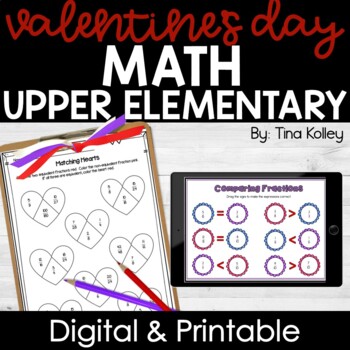Valentine's Day Math Activities - 5th Grade Math - Fractions - Place Value
- Google Drive™ folder

Products in this Bundle (2)
Bonus
Description
Keep your Upper Elementary math students engaged and learning this Valentine's Day with these Valentine-themed math activities. This resource has 8 files of independent Valentine Math activities to keep those hands and minds busy during this crazy time. This bundle includes both PRINT & DIGITAL.
Included in this resource:
- Comparing Fractions
- Equivalent Fractions
- Fraction Word Problems
- Self-Correcting Fraction Operations Worksheets (printable version)
- Fraction Operations Digital Activities
- Measurement Conversion
- Place Value Hearts Craftivity (printable)
- Place Value Digital Activity
- Logic Puzzle
- Full Answer Key
- BONUS File Included - Fun With Words Packet
Your students will love working independently or with partners to celebrate Valentine's Day. Prep is easy! Just assign in Google Classroom OR print and go!!
There are so many options with these activities, you can use them the entire month of February!
Perfect for classrooms that are both in-person and distance learning.
Would you like to see the printable product in action? Click here!
Looking for a low-prep way to implement the craftivity? Click here!
**The Digital and the Printable are almost exactly the same. A few changes had to be made when converting. **
Happy Valentine's Day!
~tina
Let's Connect!
Check out my store for more Upper Elementary Resources!


